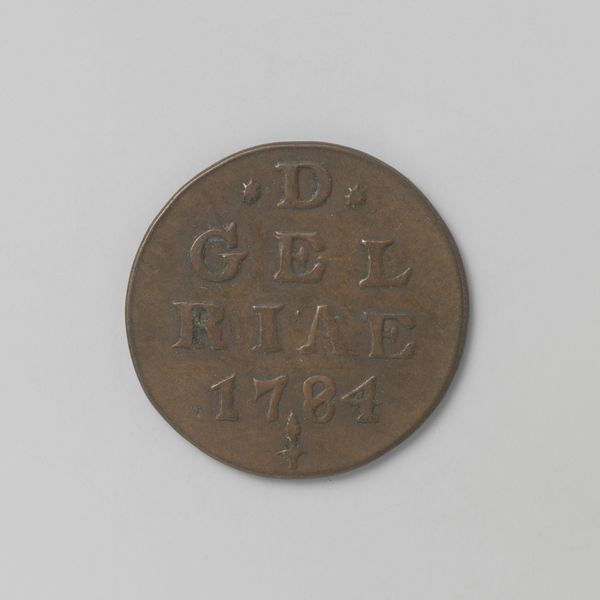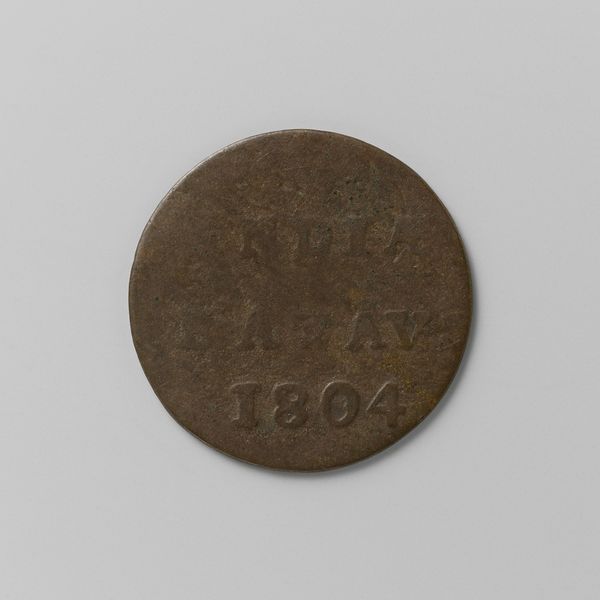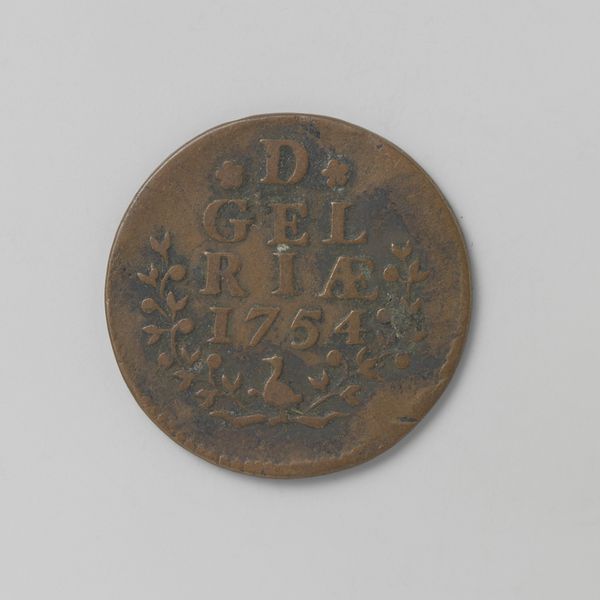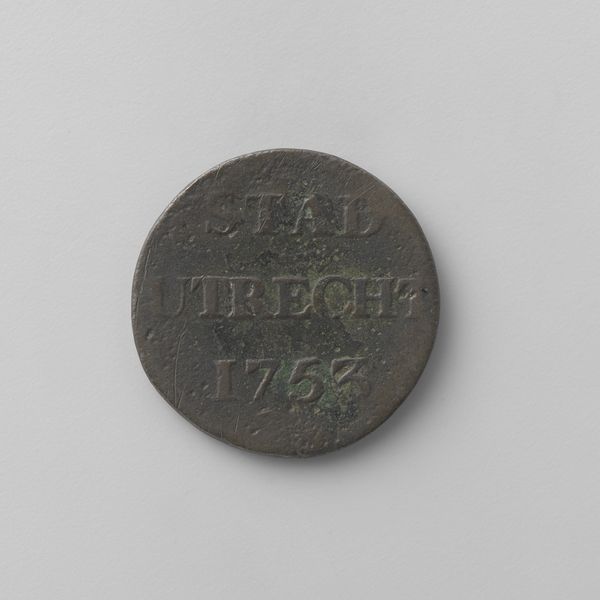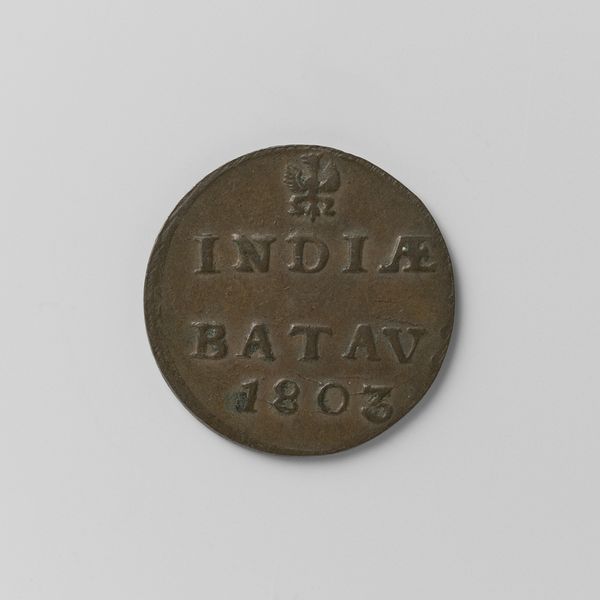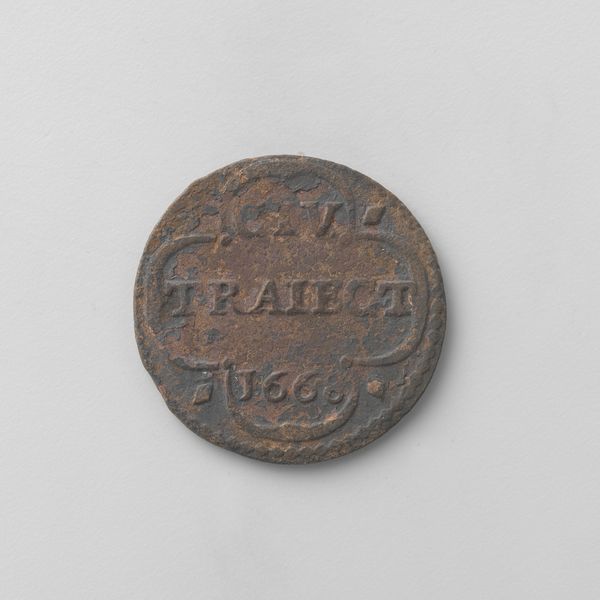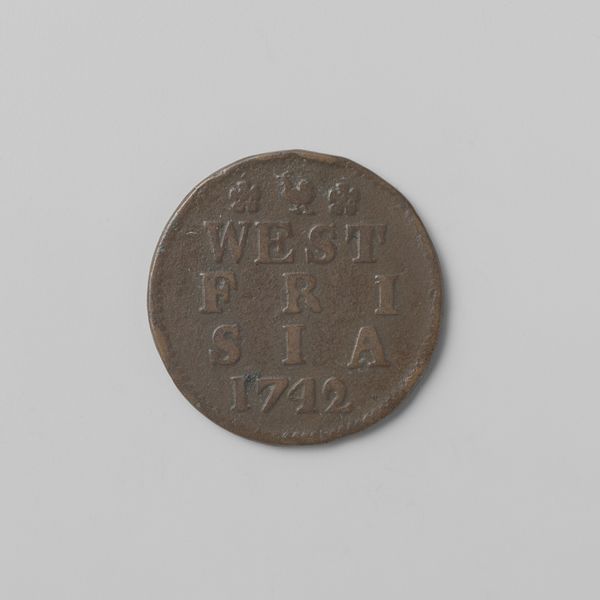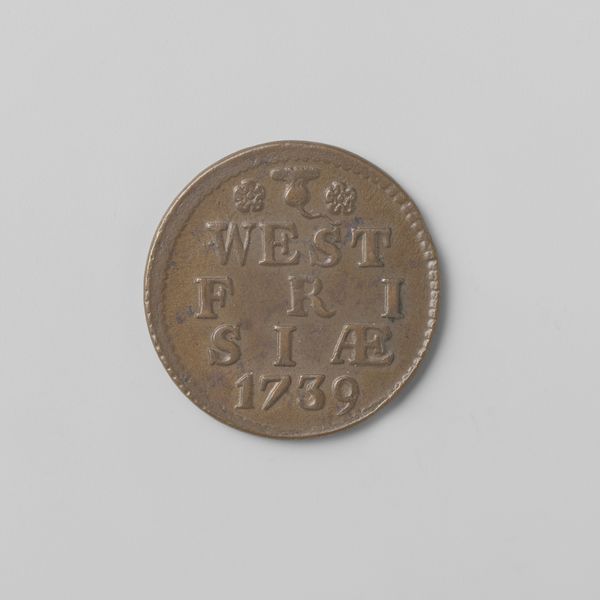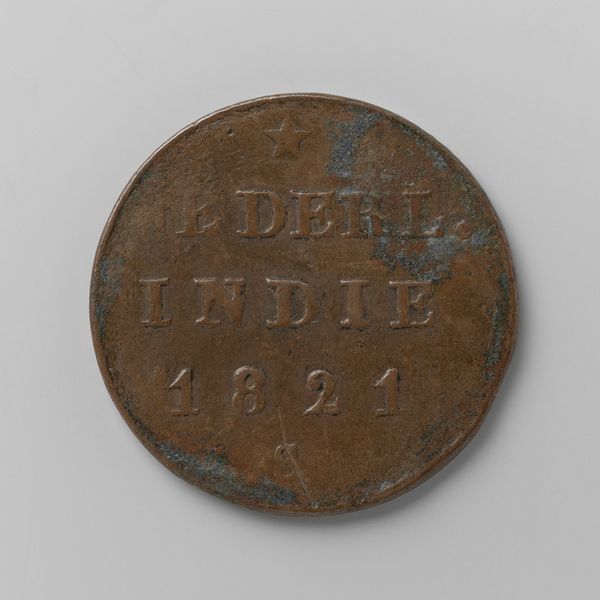
print, engraving
#
portrait
#
neoclacissism
# print
#
engraving
Dimensions: diameter 2.2 cm, weight 2.71 gr
Copyright: Rijks Museum: Open Domain
The ‘Duit van de stad Utrecht’ was produced in 1765 by the city of Utrecht. This small copper coin offers a glimpse into the economic and social structures of the Dutch Republic during the 18th century. Money is more than a mere tool for trade; it embodies power dynamics, class distinctions, and societal values. In a time marked by vast trade networks and colonial expansion, who controlled the flow of currency, controlled the world. Coins like this one circulated through every level of society, from wealthy merchants to the working class. They reflect an era where global commerce increasingly shaped local life. Consider the hands that exchanged this coin. Perhaps it was used to purchase goods brought in by the Dutch East India Company, or to pay a local artisan for their labor. This coin is not just a piece of metal; it’s a tangible link to the complex systems of exchange that defined Utrecht and the world during that time. It reminds us that even the smallest objects can tell stories about who we are, and where we have been.
Comments
No comments
Be the first to comment and join the conversation on the ultimate creative platform.
